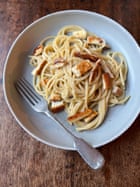
I must confess that recreating the very particular and porky pleasure of spaghetti carbonara without said pork was not a puzzle that had been keeping me up at night until a reader wrote in to ask for advice on the subject. Given that the principal actors in the classic carbonara are cured pork and cheese, it seemed to me that they’d be better off sticking with cacio e pepe, or one of the many vegan pasta dishes in the Italian repertoire – agilo e olio, say, or pasta con pangratto. After a moment’s thought, however, it struck me (rather guiltily, I must admit) that, delicious as those dishes are, they are delicious in an entirely different way from spaghetti carbonara and that, frankly, if someone has been big enough to give up meat, the least I could do is offer a recipe that does measure up in that department. So, apologies – and thank you for inspiring this column, because there really is very little I like more than cracking a bona fide culinary conundrum.
The “pork”
Carbonara is traditionally made with guanciale, or cured pork jowl, though pancetta is often substituted, and both are fatty, salty and deeply savoury. That’s a difficult thing to replicate, as the reader in question found when they tried to swap in halloumi, a similarly salty product, albeit one that’s lacking, as I realise when I try a recipe from the Casually Peckish blog, the rich, umami character of the pork, even when that halloumi is fried to a deep golden brown, as author Gen recommends, noting: “This caramelisation process will add complexity to its flavour and, as I always say, colour = flavour.” Pasta and fried halloumi is as tasty as two very nice things inevitably will be in combination, but it doesn’t scream carbonara to me. Nor, of course, is it vegan-friendly, which is my hope here.
The recipe in Bad Manners Food’s book Thug Kitchen 101 (NB the vegan food duo changed their name back in 2020) uses sun-dried tomatoes soaked in red-wine vinegar, soy sauce, liquid smoke and garlic powder, which is of course, far more vegan-friendly. That said, though I try to keep as open a mind towards sun-dried tomatoes as is possible for someone who remembers the 1990s, they taste nothing like bacon. Salty and savoury, yes, but, even after marinating, also intensely and unmistakably tomatoey.
Heather Whinney’s recipe, in her book Vegan Kids, trades the tomatoes for strips of “carrot ‘bacon’” marinated in tahini, maple syrup, dark soy sauce and liquid smoke, then baked to a crisp. These really look the part (well, they look like American-style crispy streaky rashers, anyway), but they taste unnervingly sweet; Sue Quinn’s variation, from Easy Vegan, using shiitake mushrooms brushed with oil, liquid smoke, smoked paprika, garlic and onion powder, works a lot better.
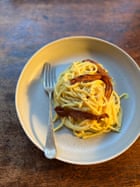
My favourite pork substitute of the lot, however, is similar, but even simpler. Daniel Gritzer writes on Serious Eats that he’s chosen king oyster mushrooms for their mild flavour (which stops this turning into pasta ai funghi by another name) and outsize stems, which can be cut into convincingly lardon-sized pieces. Rather than going to the trouble and expense of turning on the oven, he sautees them in oil until golden brown, so they retain a satisfyingly juicy texture. My one amendment is to add a little extra flavouring to help maintain the illusion: a dash of soy sauce for umami, some garlic (yes, I know many carbonara recipes don’t include garlic, but mine does) and a pinch of smoked paprika, because, although guanciale isn’t smoked, as Gritzer explains: “If there’s one thing a smoky flavour can immediately evoke, it’s meat, and we need that effect here.” You could very happily use liquid smoke instead, if you happen to have some, but it’s harder to come by in your average supermarket. Oh, and don’t be tempted to skimp on the oil – guanciale is fatty stuff, and mushrooms are not, so you want them so soak up some of that olivey goodness. (NB processed meat replacements, while no doubt excellent, require no further instructions from me, so I haven’t experimented with them here – if you have a favourite, by all means use it instead of the mushrooms.)
The sauce
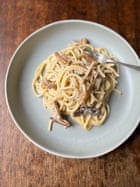
Trickier, if you’re keeping this vegan, is replicating the egg and cheese sauce, given both ingredients are off the table. The simplest version I try, from Bad Manners, combines nutritional yeast, flakes of dried yeast with what Bon Appétit magazine describes as a “cheesy and nutty” flavour, mixed with a cornflour paste and a splash of pasta cooking water, so it thickens in the pan with the spaghetti. While this is perfectly pleasant, if a little subtle, given that it doesn’t even contain the black pepper that’s such a vital element of the original dish, it doesn’t do much to scratch that egg-rich itch.
Quinn’s cashew-cream based recipe is far more effective, boasting both the requisite richness and a slightly nubbly, cheesy texture, but even it can’t compete with the silken tofu used by both Whinney and Gritzer, which lives up to its name by coating the spaghetti strands with a creamy, silky sauce. It does need a bit of help in the flavour department, though.
Nutritional yeast is a good start, thanks to its aforementioned cheesy flavour, and I also play around with the white miso used by Quinn, Whinney and Gritzer, but find even this mildest of fermented bean pastes has a distinctive, earthy flavour that has nowhere to hide in such a simple dish; yeast and salt should be enough on their own. In my humble opinion, Gritzer’s cleverest move is to recognise that pecorino romano, like parmesan, is not only salty and savoury, but “sharp to the point of being spicy, with a pretty decent, lactic funk”. Thinking laterally, he deploys sauerkraut brine, which also contains lactic acid. This gives his sauce an undeniably sharp yet slightly cabbagey flavour that, though not unpleasant, isn’t what I’d expect from a carbonara, so I’m going to stick with the white-wine vinegar he supplements it with for extra tartness.
Though an awful lot of black pepper is mandatory, I’ve omitted the garlic and onion powder used in several recipes, because, while I’m not snotty about them, they taste to me more like instant noodles than carbonara. I’ve kept Whinney’s pinch of turmeric, however, because its gorgeous colour immediately makes my brain think of egg yolks.
The topping
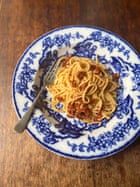
Traditionally, carbonara doesn’t have any topping apart from a further avalanche of grated cheese, which is out here for obvious reasons (unless you have a favourite plant-based cheese that would work in this instance, in which case load it on). Though Bad Manners Food’s sprinkle of flat-leaf parsley is surely more for aesthetic reasons than flavour, I do like their crisp breadcrumbs – albeit smashed small and seasoned simply with salt and oil, rather than their lemon zest, paprika and garlic powder. If you can’t be bothered with them, don’t worry; much like the grated cheese, they won’t make or break the dish.
Perfect meat-free spaghetti carbonara
Prep 10 min
Cook 13 min
Serves 2, and easily scalable
80g king oyster mushrooms
1 tsp light soy sauce
¼ tsp sweet smoked paprika, or a dash of liquid smoke
Salt
150g-200g spaghetti, depending on whether you’re eating this as the main event or a pasta course
100g silken tofu
1 tsp white-wine vinegar
1 pinch turmeric (optional)
10g nutritional yeast
Coarsely ground black pepper
2½ tbsp extra-virgin olive oil
2 tsp dried breadcrumbs (optional)
1 garlic clove, peeled and squashed
Put the kettle on to boil. Clean the mushrooms and cut them into roughly 2cm x 1cm chunks.
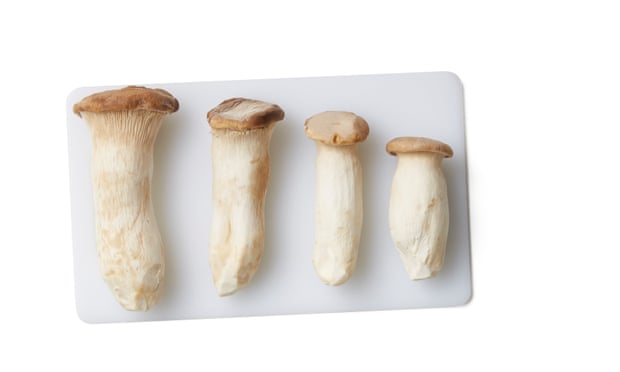
Mix the soy sauce and paprika in a bowl, tumble in the mushrooms and toss to coat lightly (I find it easiest to use my hands).
Fill a large sauce with the boiling water from the kettle, put it on a high heat, salt well, then add the spaghetti and cook until al dente, according to the packet instructions.
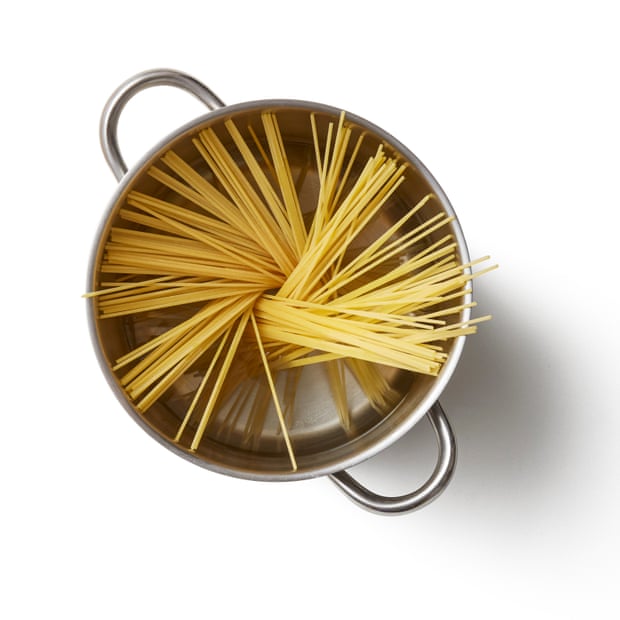
Meanwhile, put the tofu, vinegar and turmeric, if using, in a small bowl or mini-blender.
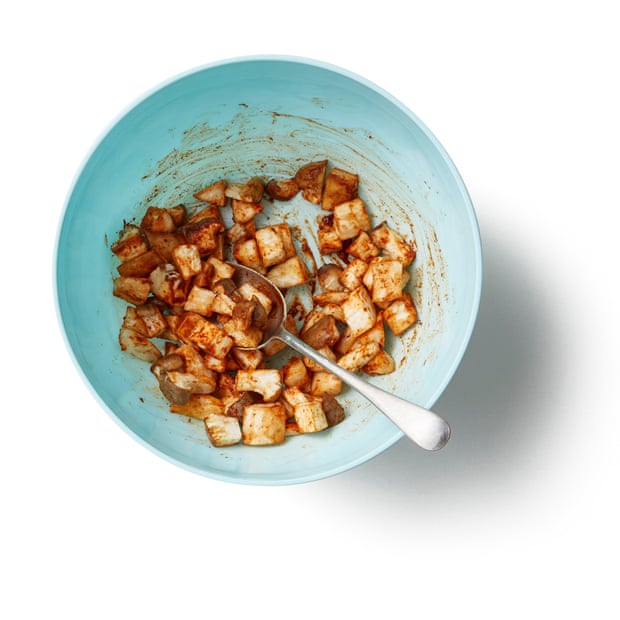
Scoop out about 60ml (four tablespoons) of the pasta water, stir this into the nutritional yeast, to help it dissolve, then add to the tofu mixture.
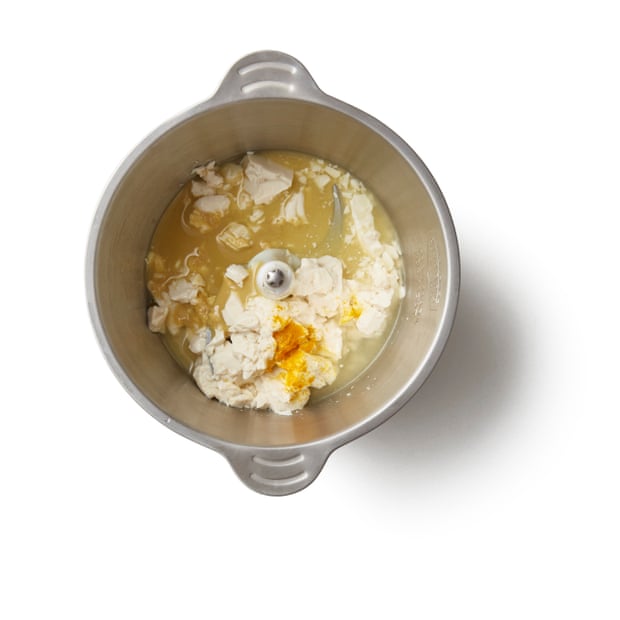
Blitz to a smooth paste (if you don’t have a stick blender or mini chopper, beat it into submission with a fork, but make sure it’s really smooth), then season well with salt and copious amounts of black pepper to taste.
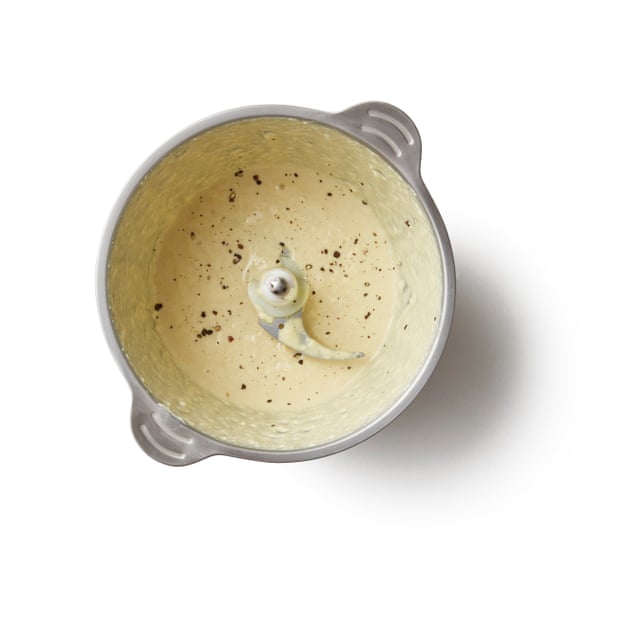
If you’re making the breadcrumb topping, put half a tablespoon of oil in a frying pan over a medium-high heat. If your breadcrumbs are coarse, finely grind them in a mortar.
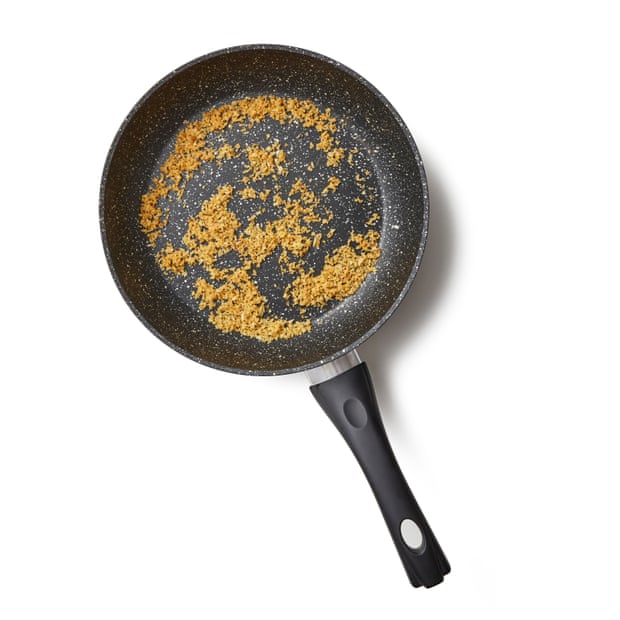
Generously season the breadcrumbs, fry for a couple of minutes, until golden, then tip into a bowl.
Pour the remaining two tablespoons of oil into the same pan with the bashed garlic clove and, once hot, add the mushrooms.
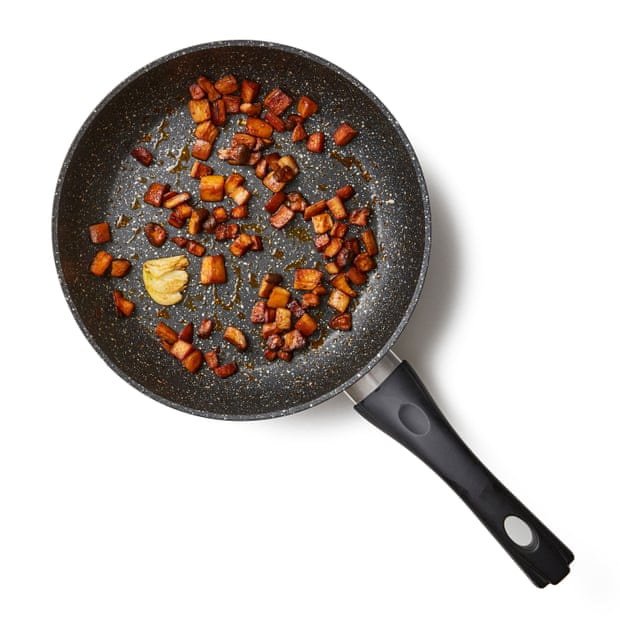
Fry, stirring often, until golden brown all over – turn the heat right down if they threaten to burn.
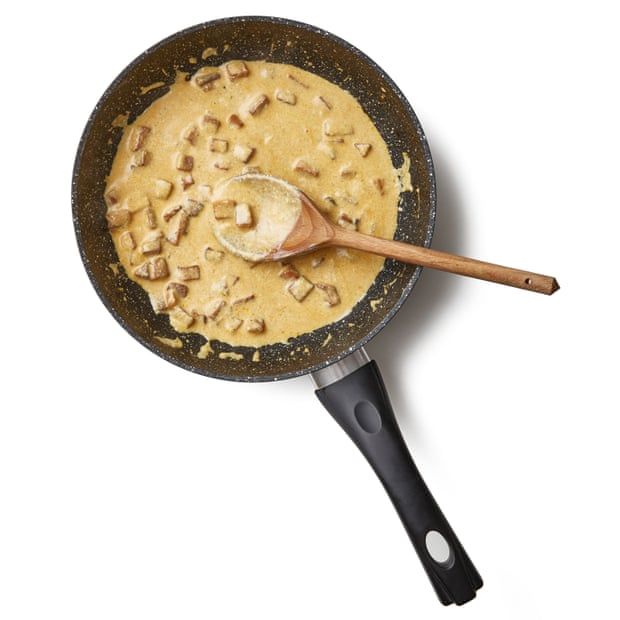
When the pasta is a minute or so from being ready, pour the sauce mix into the mushroom pan and gently heat it through, stirring to loosen any juices from the base of the pan.
Drain the pasta, keeping a little of the cooking water, then add the spaghetti to the sauce and toss until well combined, adding a splash or two of the cooking water to loosen and emulsify the mix, if necessary.
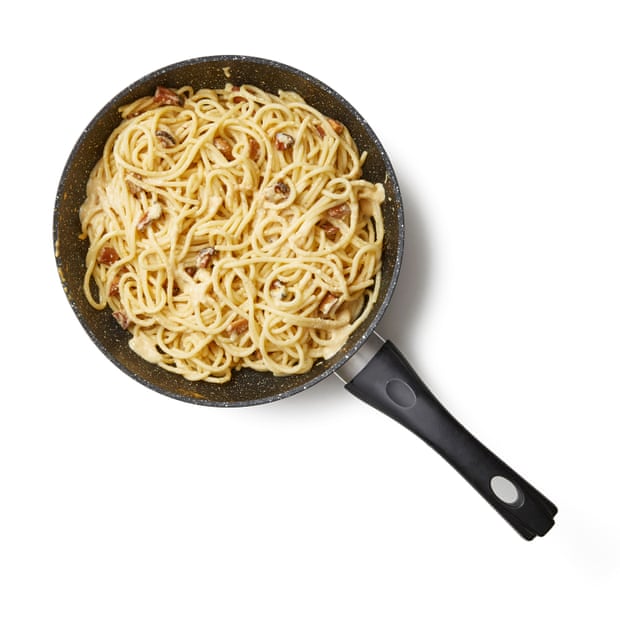
Divide the pasta between plates, top with the breadcrumbs, if using, and a final sprinkle of black pepper, and serve at once.
-
If you’ve experimented with making meat-free carbonara, be it vegetarian or vegan, what are your top tips for success? And what other classic pasta dishes would you like to see a plant-based take on?
-
Felicity Cloake’s new book, Red Sauce Brown Sauce: A British Breakfast Odyssey, is published by HarperCollins at £16.99. To order a copy for £14.78, go to guardianbookshop.com



